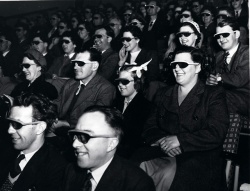Read
Section 13.3: Adapting your presentation to teach, in Saylor Academy (Ed.) 2012. Business Communication for Success. (See page(s) 508 - 517 in PDF version.).
Paradoxically, an audience-centred approach begins with active listening on the speaker’s part. This reading describes how to engage audiences with dynamic attention statements and activities that encourage active listening by making topics relevant to their interests, needs, and concerns. However, to do that it's important to know your audience. In preparation, it's important to:
- identify areas of common ground to help your audience connect with your message,
- find out what they already know, so you can highlight the benefits of your new information, and
- frame your story in a relevant, well-organised way.
In presentation delivery, remember that it is key to:
- show interest in your topic,
- maintain focus on key ideas,
- vary your voice and movement, and
- integrate feedback strategies to help your audience stay engaged.
For audiences, listening to a presentation demands focus. Beyond clear organisation of ideas, audiences appreciate variety. People learn in a holistic way, through thinking, feeling, and action, as well as sensory modes of seeing and hearing. Using multi-modal approaches in your presentation, such as integrating visual aids and experiential activities, will help to address diverse audience interests.
Finally, remember to include time for questions. Anticipating questions and formulating your responses in advance is a crucial part of speech preparation to ensure a strong presentation wrap-up. Preparing to suggest questions to the audience is another good way to engage lively discussion in your closing.


